JP Morgan Chase 2015 Annual Report Download - page 15
Download and view the complete annual report
Please find page 15 of the 2015 JP Morgan Chase annual report below. You can navigate through the pages in the report by either clicking on the pages listed below, or by using the keyword search tool below to find specific information within the annual report.-
 1
1 -
 2
2 -
 3
3 -
 4
4 -
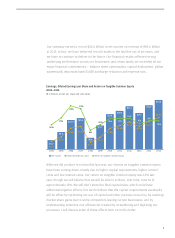 5
5 -
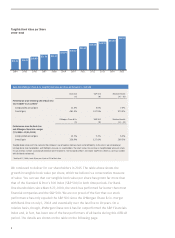 6
6 -
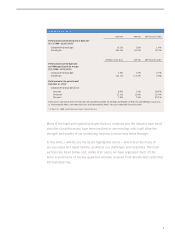 7
7 -
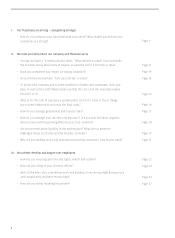 8
8 -
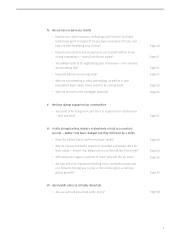 9
9 -
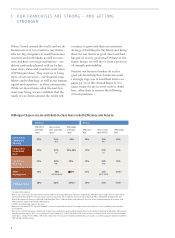 10
10 -
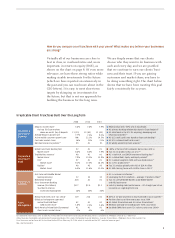 11
11 -
 12
12 -
 13
13 -
 14
14 -
 15
15 -
 16
16 -
 17
17 -
 18
18 -
 19
19 -
 20
20 -
 21
21 -
 22
22 -
 23
23 -
 24
24 -
 25
25 -
 26
26 -
 27
27 -
 28
28 -
 29
29 -
 30
30 -
 31
31 -
 32
32 -
 33
33 -
 34
34 -
 35
35 -
 36
36 -
 37
37 -
 38
38 -
 39
39 -
 40
40 -
 41
41 -
 42
42 -
 43
43 -
 44
44 -
 45
45 -
 46
46 -
 47
47 -
 48
48 -
 49
49 -
 50
50 -
 51
51 -
 52
52 -
 53
53 -
 54
54 -
 55
55 -
 56
56 -
 57
57 -
 58
58 -
 59
59 -
 60
60 -
 61
61 -
 62
62 -
 63
63 -
 64
64 -
 65
65 -
 66
66 -
 67
67 -
 68
68 -
 69
69 -
 70
70 -
 71
71 -
 72
72 -
 73
73 -
 74
74 -
 75
75 -
 76
76 -
 77
77 -
 78
78 -
 79
79 -
 80
80 -
 81
81 -
 82
82 -
 83
83 -
 84
84 -
 85
85 -
 86
86 -
 87
87 -
 88
88 -
 89
89 -
 90
90 -
 91
91 -
 92
92 -
 93
93 -
 94
94 -
 95
95 -
 96
96 -
 97
97 -
 98
98 -
 99
99 -
 100
100 -
 101
101 -
 102
102 -
 103
103 -
 104
104 -
 105
105 -
 106
106 -
 107
107 -
 108
108 -
 109
109 -
 110
110 -
 111
111 -
 112
112 -
 113
113 -
 114
114 -
 115
115 -
 116
116 -
 117
117 -
 118
118 -
 119
119 -
 120
120 -
 121
121 -
 122
122 -
 123
123 -
 124
124 -
 125
125 -
 126
126 -
 127
127 -
 128
128 -
 129
129 -
 130
130 -
 131
131 -
 132
132 -
 133
133 -
 134
134 -
 135
135 -
 136
136 -
 137
137 -
 138
138 -
 139
139 -
 140
140 -
 141
141 -
 142
142 -
 143
143 -
 144
144 -
 145
145 -
 146
146 -
 147
147 -
 148
148 -
 149
149 -
 150
150 -
 151
151 -
 152
152 -
 153
153 -
 154
154 -
 155
155 -
 156
156 -
 157
157 -
 158
158 -
 159
159 -
 160
160 -
 161
161 -
 162
162 -
 163
163 -
 164
164 -
 165
165 -
 166
166 -
 167
167 -
 168
168 -
 169
169 -
 170
170 -
 171
171 -
 172
172 -
 173
173 -
 174
174 -
 175
175 -
 176
176 -
 177
177 -
 178
178 -
 179
179 -
 180
180 -
 181
181 -
 182
182 -
 183
183 -
 184
184 -
 185
185 -
 186
186 -
 187
187 -
 188
188 -
 189
189 -
 190
190 -
 191
191 -
 192
192 -
 193
193 -
 194
194 -
 195
195 -
 196
196 -
 197
197 -
 198
198 -
 199
199 -
 200
200 -
 201
201 -
 202
202 -
 203
203 -
 204
204 -
 205
205 -
 206
206 -
 207
207 -
 208
208 -
 209
209 -
 210
210 -
 211
211 -
 212
212 -
 213
213 -
 214
214 -
 215
215 -
 216
216 -
 217
217 -
 218
218 -
 219
219 -
 220
220 -
 221
221 -
 222
222 -
 223
223 -
 224
224 -
 225
225 -
 226
226 -
 227
227 -
 228
228 -
 229
229 -
 230
230 -
 231
231 -
 232
232 -
 233
233 -
 234
234 -
 235
235 -
 236
236 -
 237
237 -
 238
238 -
 239
239 -
 240
240 -
 241
241 -
 242
242 -
 243
243 -
 244
244 -
 245
245 -
 246
246 -
 247
247 -
 248
248 -
 249
249 -
 250
250 -
 251
251 -
 252
252 -
 253
253 -
 254
254 -
 255
255 -
 256
256 -
 257
257 -
 258
258 -
 259
259 -
 260
260 -
 261
261 -
 262
262 -
 263
263 -
 264
264 -
 265
265 -
 266
266 -
 267
267 -
 268
268 -
 269
269 -
 270
270 -
 271
271 -
 272
272 -
 273
273 -
 274
274 -
 275
275 -
 276
276 -
 277
277 -
 278
278 -
 279
279 -
 280
280 -
 281
281 -
 282
282 -
 283
283 -
 284
284 -
 285
285 -
 286
286 -
 287
287 -
 288
288 -
 289
289 -
 290
290 -
 291
291 -
 292
292 -
 293
293 -
 294
294 -
 295
295 -
 296
296 -
 297
297 -
 298
298 -
 299
299 -
 300
300 -
 301
301 -
 302
302 -
 303
303 -
 304
304 -
 305
305 -
 306
306 -
 307
307 -
 308
308 -
 309
309 -
 310
310 -
 311
311 -
 312
312 -
 313
313 -
 314
314 -
 315
315 -
 316
316 -
 317
317 -
 318
318 -
 319
319 -
 320
320 -
 321
321 -
 322
322 -
 323
323 -
 324
324 -
 325
325 -
 326
326 -
 327
327 -
 328
328 -
 329
329 -
 330
330 -
 331
331 -
 332
332
 |
 |

1313
tive credit losses were for all banks during
the Great Recession (they were 5.6%), and
our credit book today is materially better
than what we had at that time. The 2015
CCAR losses were even with the actual losses
for banks during the worst two years of the
Great Depression in the 1930s (6.4%).
The stress test is extremely severe on trading and
counterparty risk.
Our 2015 CCAR trading and counterparty
losses were $24 billion. We have two compar-
isons that should give comfort that our losses
would never be this large.
First, recall what actually happened to us in
2008. In the worst quarter of 2008, we lost
$1.7 billion; for the entire year, we made $6.3
billion in trading revenue in the Investment
Bank, which included some modest losses
on the Lehman default (one of our largest
counterparties). The trading books are much
more conservative today than they were in
2008, and at that time, we were still paying
a considerable cost for assimilating and
de-risking Bear Stearns.
Second, we run hundreds of stress tests
of our own each week, across our global
trading operations, to ensure our ability
to withstand and survive many bad and
extreme scenarios. These scenarios include
events such as what happened in 2008, other
historically damaging events and also new
situations that might occur. We manage
our company so that even under the worst
market stress test conditions, we would
almost never bear a loss of more than $5
billion (remember, we earn approximately
$10 billion pre-tax, pre-provision each
quarter). We recognize that on rare occa-
sions, we could experience a negative signifi-
cant event that could lead to our having a
poor quarter. But we will be vigilant and will
never take such a high degree of risk that it
jeopardizes the health of our company and
our ability to continue to serve our clients.
This is a bedrock principle. Later in this
letter, I will also describe how we think about
idiosyncratic geopolitical risk.
And the capital we have to bear losses is
enormous.
We have an extraordinary amount of capital
to sustain us in the event of losses. It is
instructive to compare assumed extreme
losses against how much capital we have for
this purpose.
You can see in the table below that JPMorgan
Chase alone has enough loss absorbing
resources to bear all the losses, assumed by
CCAR, of the 31 largest banks in the United
States. Because of regulations and higher
capital, large banks in the United States are
far stronger. And even if any one bank might
fail, in my opinion, there is virtually no
chance of a domino eect. Our shareholders
should understand that while large banks do
significant business with each other, they do
not directly extend much credit to one other.
And when they trade derivatives, they mark-
to-market and post collateral to each other
every day.
Resilience of JPMorgan Chase through multiple layers of protection
($ in billions)
Total loss absorbing resources
December 31, 2015:
JPMorgan Chase quarterly estimated
pre-tax, pre-provision earnings ~$ 10
Eligible long-term debt $ 125
Preferred equity 26 CCAR industry losses2
CET1 173 JPMorgan Chase losses $ 55
Total reserves1 25 Losses of 30 other participating banks 167
Total resources ˜$ 350 Total CCAR losses $ 222
1 Includes credit, legal, tax and valuation reserves.
2 As estimated for the nine quarters ending December 31, 2016, by the Federal Reserve in the 2015 CCAR severely adverse scenario.
Note: Numbers may not sum due to rounding.
